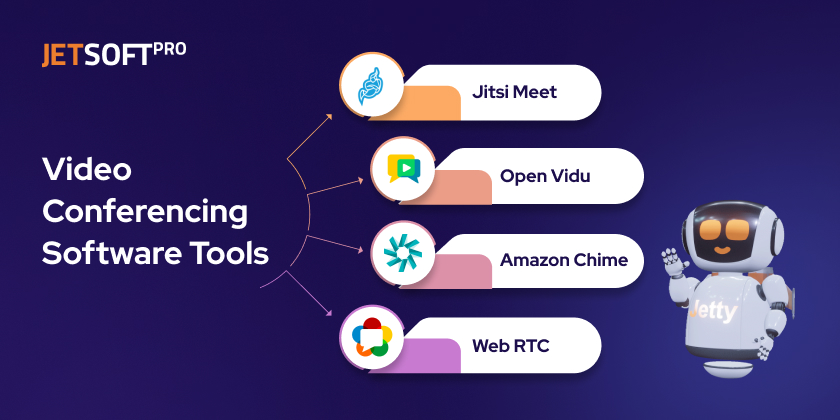
Chatting is the modern communication standard. However, being in video touch with your colleagues or clients in business communication is essential.
So What Is a Video Call?
In fact, it is the transmission of video and audio data between two or more interlocutors. An important factor is a minimum delay in time from the moment of sending to the moment of receipt. In some cases, it plays a key role.
How To Choose The Video Platform?
Main selection factors:
- Availability of documentation;
- Well-argued stability;
- Community support;
- Availability of open source for the maximum number of platforms.

WebRTC
Link: https://webrtc.org/
WebRTC (Web Real-Time Communications) is an open source project that enables real-time voice, text, and video communications capabilities between web browsers and devices. WebRTC provides software developers with application programming interfaces (APIs) written in JavaScript.
With WebRTC, data transfer occurs in real time without the need for custom interfaces, extra plugins, or special software for browser integration. WebRTC enables real-time audio and video communication simply by opening a webpage.
Advantages of WebRTC:
- Carefully described protocol;
- Lightweight and fast. In most cases, data transfer is peer-to-peer and this has a good effect on performance;
- Fast result. In a short period of time, you will have a basic version that supports video calling.
Disadvantages of WebRTC:
- WebRTC is just a protocol. For the initial connection, you need to pass Session Description Protocol (SDP) data. Any Pub-Sub platform or other is suitable for this;
- Automatic video quality control;
- To support many conference participants, you need to choose the SFU architecture for scalability and stability. That is, you cannot do without your own media servers (Kurento for example).
Jitsi Meet
Link: https://jitsi.org/
Jitsi Meet is a fully encrypted, 100% open source video conferencing solution that you can use all for free. The platform is developed by the community and is available for all basic platforms (Web/ Mobile / Desktop).
Advantages of Jitsi Meet:
- Everything is out of the box;
- Good documentation on deployment and installation;
- iOS / Android / Desktop / Web clients;
- Possibility of integration of other services;
- It is used as an engine for many other open source projects (e.g. Rocket. Chat);
- Forum. Recommendations and real experience of use in production;
- Available schemes for scaling.
Disadvantages of Jitsi Meet:
- Open Source products still require effort to configure, install, and calculate loads on your own;
- You need to be well versed in the source code in order to make changes;
- Load balancing will be your responsibility.
OpenVidu
Link: https://openvidu.io
OpenVidu is a free open-source multi-platform video conferencing solution. It is based on the Kurentu Media server and has an external JavaScript wrapper for user and call management.
This is an alternative to Jitsi Meet, so their advantages and disadvantages are primarily the same.
AWS Chime
Amazon Chime is a communications service that lets you meet, chat, and place business calls inside and outside your organization, all using a single application. The service will work especially well for Enterprise projects.
Advantages of AWS Chime:
- Windows, Mac, web, IOS, Android devices;
- You can administer enterprise users, manage policies, and setup SSO or other advanced features in minutes;
- Available schemes for scaling;
- Fast result.
Disadvantages of AWS Chime:
- It is not possible to change your choice to another service;
- AWS offers a closed source system and therefore you cannot influence some processes;
- The high price;
- The legislation of many countries requires the placement of servers on their territory, AWS only has servers in certain countries. Do not forget to specify this moment!
At JetSoftPro we advise you on how to choose the best solution for your business goal. Contact us to learn more.

